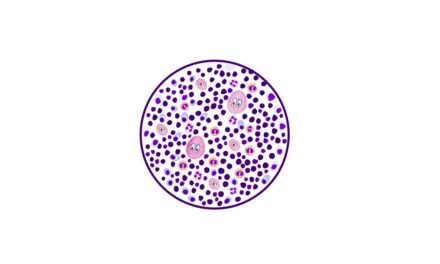Hereditary Spherocytosis( HS)
Hereditary spherocytosis (HS) is a genetic condition brought on by intrinsic defect in the red cell membrane which make red blood cells spheroid, less flexible, and susceptible to splenic sequestration and destruction.
Epidemiology
autosomal dominant inheritance pattern in 3/4th of cases. remaining cases are show compound heterozygosity where there is inheritance of two different defects and have more severe form of the disease.
Pathogenesis.
Let us understand the structure of normal RBC.
The physicochemical characteristics of the unique membrane skeleton of the normal red cell are responsible for its extraordinary deformability and durability. This cytoskeleton lies adjacent to the internal surface of the plasma membrane. Its main protein component, spectrin, is made up of two polypeptide chains, and, that intertwine to form flexible (helical) heterodimers. The spectrin tethers to the overlying plasma membrane to form vertical linkages with the help of many proteins like ankyrin, 4.2 band 3, actin, 4.1, glycophorin A as illustrated below. The function of the cytoskeleton is to keep the membrane intact when the RBCs pass through the narrow channels in splenic cords.
Thus, any deficiency in any of the cytoskeletal proteins results in membrane loss due to instability and gradually over a period of time, there is decreased surface to volume ratio, and transformation of biconcave rbcs into spherocytes. The same is illustrated as below

The spherocytes have decreased deformability and hence they are prone to stasis and phagocytosis by splenic macrophages while they pass through splenic cords and sinuses. Thus the hemolysis is predominantly extravascular and hence anemia, jaundice and splenomegaly are the main clinical features of hereditary spherocytosis.
Clinical features:
Anemia, Jaundice & Splenomegaly(moderate) of varying severity. In 20 – 30% of cases they can be asymptomatic. The compound heterozygous forms willmanifest with jaundice at birth.
Lab features:
Hemoglobin – low
MCV –slightly decreased due to Membrane loss and cell dehydration
MCHC – Increased Due to mild cellular dehydration
Reticulocytosis
Increased serum bilirubin
Peripheral smear show microspherocytes and polychromatophilic cells.

Spherocytes are Not specific to HS alone!May be seen in autoimmune hemolytic anemias and hence it should be Excluded by Direct Coombs test which will be Negative in HS.
OSMOTIC FRAGILITY TEST
Principal confirmation test for the diagnosis of HS
This test is a measure of erythrocyte’s resistance to hemolysis by osmotic stress which depends primarily on
Volume of the cell
The surface area
Membrane function
Determined by measuring the degree of hemolysis in hypotonic saline solution.
Spherocytic red blood cells have a decreased capacity to expand and hence will rupture in mildly hypotonic conditions that fail to lyse normal red cells.
Thus Osmotic fragility is INCREASED
This test is labor intensive and time-consuming !!! and hence it is replaced by newer tests like flow cytometry
FLOW CYTOMETRY
Analysis of eosin-5′-maleimide-labeled red blood cells
Basic principle of the EMA-RBC binding test involves the covalent binding of EMA to lysine-430 on the first extracellular loop of band 3 protein
Other tests
specific tests to look for abnormalities in spectrin, ankyrin, 4.2, or band 3
Sodium dodecyl sulphate-polyacrylamide gel electrophoresis (SDS-PAGE)
NOT ROUTINELY DONE!Only in research laboratories.
Complications in hereditary spherocytosis
Cholelithiasis and cholecystitis
Aplastic and hemolytic crisis. Aplastic crisis is Triggered by acute Parvovirus infections where as Hemolytic crisis is Due to intercurrent events leading to increased splenic destruction eg: Infectious mononucleosis
Treatment
Splenectomy – definitive treatment . Splenectomy eliminates hemolysis and the associated signs and symptoms. Note that splenectomy corrects anemia but spherocytes remain!
Symptomatic treatment to manage hyperbilirubinemia, infections and crisis
Click here to watch the short video tutorial on hereditary spherocytosis






